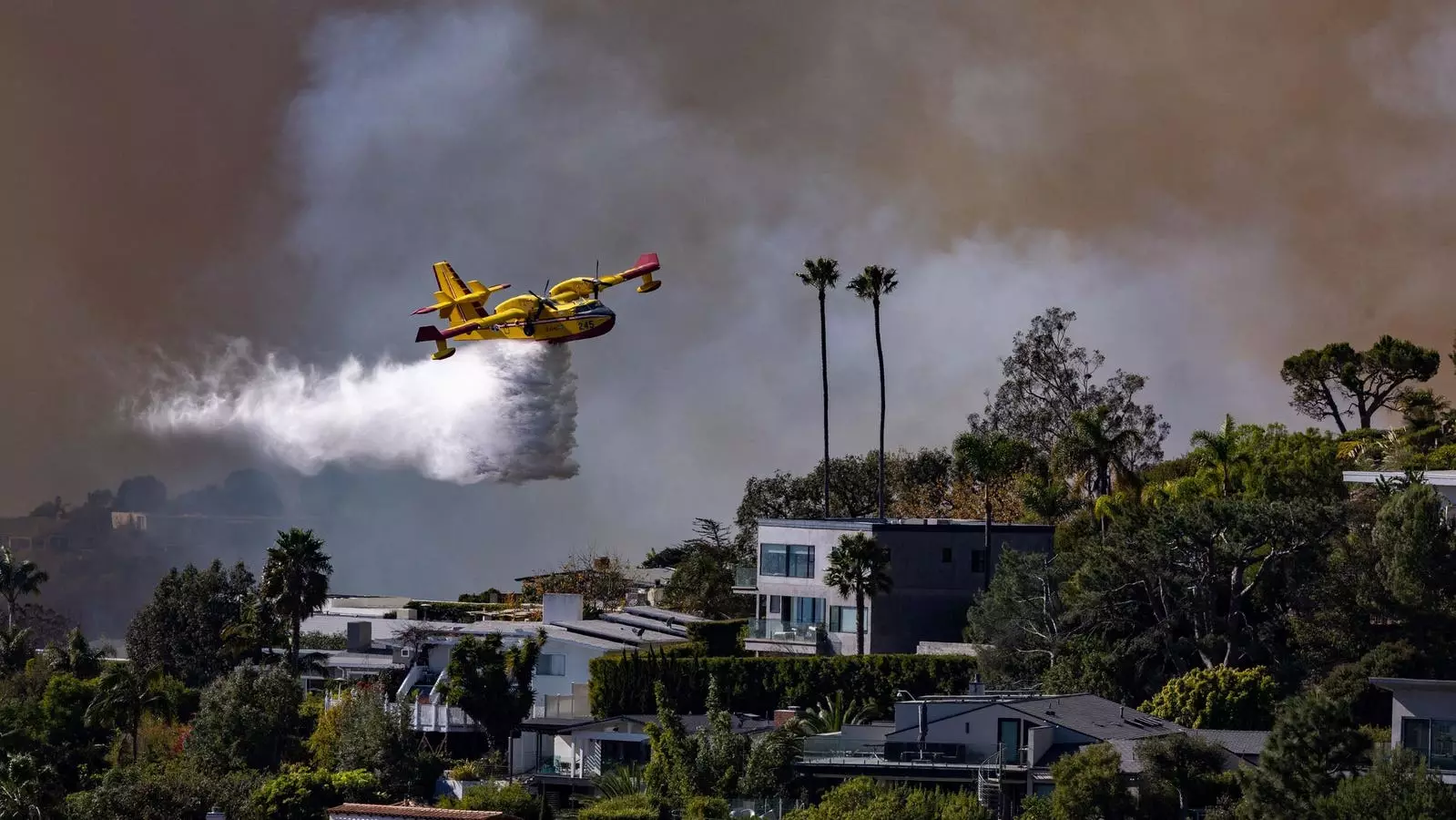Wildfires have continuously plagued California, leaving devastation in their wake. The recent fires in Los Angeles highlight not only the environmental crisis but also the intertwined relationships between powerful entities and the essential resources that govern daily life. One of the most discussed subjects in this context has been the role of Stewart and Lynda Resnick, prominent figures in the Wonderful Company, who have garnered both attention and criticism for their influence over the state’s water resources. However, attributing the wildfires solely to their actions oversimplifies a much larger issue rooted in infrastructure failures and climate adaptation strategies.
A common misconception gaining traction during fire emergencies is that water supply shortages directly lead to ineffective firefighting efforts. This was particularly apparent during the recent Los Angeles wildfires, where social media buzzed with accusations that the fire hydrants had run dry, leaving firefighters ill-equipped to tackle the infernos. However, the reality is more nuanced; reports indicate that the reservoirs in and around Los Angeles are at adequate levels. Instead, the criticism should be aimed at the aging infrastructure that hampers the delivery of water where it is most desperately needed during catastrophic events.
In speaking with experts, it became apparent that the systemic issues plaguing water distribution in urban environments contribute significantly to the inadequacies observed during the wildfires. Bridging the gap between an overflowing reservoir and an optimal firefighting response requires robust planning, investment in modern infrastructure, and a reevaluation of management strategies. As Dr. Mark Gold from the Natural Resources Defense Council noted, the concept of „climate whiplash“ reflects the increasingly erratic weather patterns exacerbated by climate change, emphasizing that governance must evolve to respond more effectively to these climatic challenges.
The interconnected web of climate change, groundwater management, and wildfire response requires a strategic realignment of priorities. While reducing greenhouse gas emissions is undeniably vital, efforts must equally prioritize adaptation strategies that bolster resilience against the effects of climate change. This paradigm shift ought to focus on comprehensive water security measures, fire management protocols, and long-term plans to mitigate risks posed by rising sea levels.
Allocating significant funds for disaster relief, as recently pledged by the Wonderful Company, plays a crucial role. Their $10 million commitment to support recovery efforts serves as a reminder that corporate entities can wield substantial influence in crisis conversations. Realigning corporate philanthropy with disaster preparedness could potentially lead to more meaningful advancements in California’s technological and infrastructural landscape.
Public awareness and community involvement are integral in confronting these challenges. As societal discourse around wildfires intensifies, it is imperative for citizens to discern fact from fiction. Misinformation can lead to unwarranted scapegoating of influential figures or corporations while neglecting to address systemic inequities that contribute to resource mismanagement. Cultivating an informed public that actively engages in local governance can drive significant change.
Additionally, environmental and civic leaders must strive to cultivate a more transparent dialogue with residents to foster trust and accountability. Public forums, educational campaigns, and grassroots initiatives can create pathways for meaningful discussions about water management and sustainable living amidst the threat of wildfires.
The recent challenges posed by wildfires in California illuminate the urgent need for a radical recalibration of how we manage water resources and address climate-related crises. While influential figures like Stewart and Lynda Resnick often become the focal point of criticism, the broader conversation should encompass the complex interplay of infrastructure issues, climate adaptation strategies, and community engagement. Building a sustainable future requires collaboration between corporations, government bodies, and citizens alike, paving the way for a more resilient California.


Napsat komentář